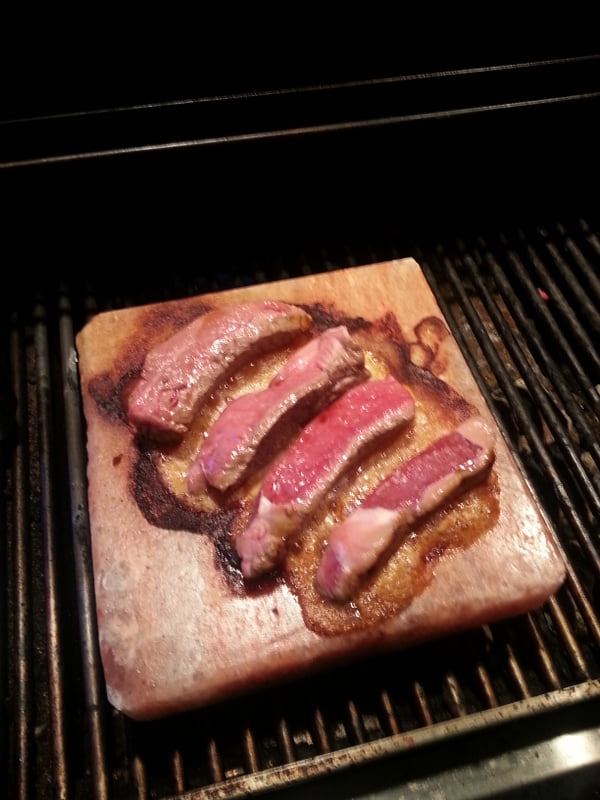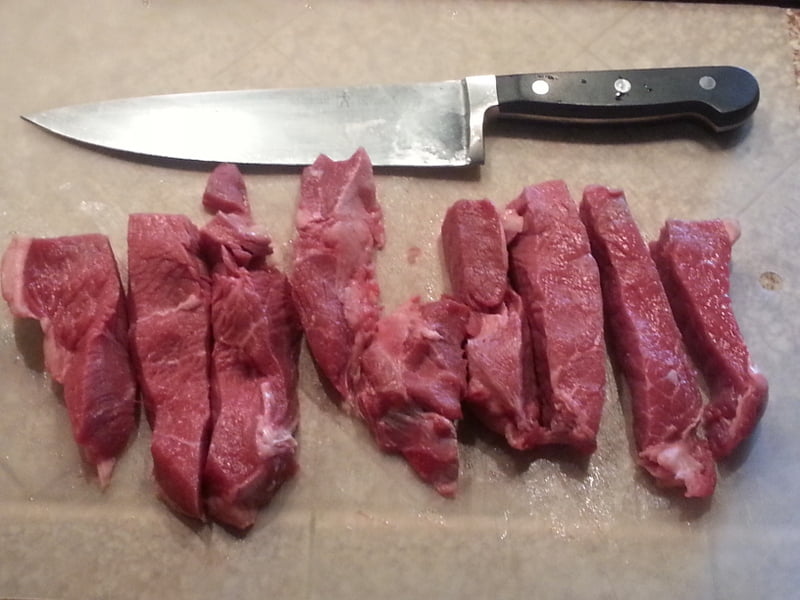In July I attended the California Gift Show in Los Angeles. It’s an easy show for me to attend. Because I live in Southern California, LA is close; and because I am an interior design and remodeling professional, not a gift vendor, per se, much of what is on display there doesn’t apply to me, so I can scan the show in less than a day. This is not to say that I don’t have my eyes wide open for the unique and the different. I always come away with several good possibilities. One such good possibility is the Himalayan Salt Plate. There was a demonstration kitchen at the show cooking up all kinds of stuff on one of these and I got hungry watching. A few were for sale at the booth, so I picked one up, took it home and tried it out. The results were delicious.
Rich in minerals and iron

Pink Himalayan salt was once sea salt. A couple hundred million years ago, crystallized sea salt beds were covered by lava and since then have been also covered in snow and ice year round, thus protected from pollution, and resulting in what many claim is the purest salt on earth. According to my vendor, the salt blocks I’m using were harvested from deep within the Himalayan mountains in Pakistan. The salt’s pink color is the result of the its rich and varied mineral and iron content. In 2003 the Bavarian consumer protection agency analyzed 15 specimens of Himalaya salt sold in Germany and could detect at least ten different minerals. Additionally, pink Himalayan salt contains less sodium per serving than table salt. Although they are made of the same components, pink Himalayan salt has a larger crystal structure than table salt, resulting in a 1/4 teaspoon serving with fewer crystals of salt than table salt.
Cook right on the salt

Even watching the demo, it was hard for me to believe that we were going to put this hunk of salt right on a flame but that’s just what we did. The block can be placed right on the stove top or, as in our case, right on a gas grill. It can also be placed in the oven. The trick is to heat it slowly.
If you’re putting it in the oven, place your dry salt plate in a cold oven and set the heat at 250 degrees. After 8-10 minutes, when the oven reaches 250, remove the salt plate for thirty minutes turn the temperature up to 400.
On the stove-top or grill, start out on low heat and gradually increase the flame every 10 minutes for about 30 minutes. When the himalayan salt plate is hot enough to cook on, a drop of water will bead up and steam off just like on a skillet.
On an electric stove, use a metal spacer, like the kind that comes with a wok, and heat the salt plate using stove-top instructions.
Thin strips … or not

All types of meat can be cooked on the himalayan salt plate: steaks, fish, shellfish, chicken, etc. Vegetables can be grilled on it, too. It is recommended that you use thin strips of meat, especially if you’re cooking steak or chicken. Flank or skirt steaks work best, I read, but I went for a nice thick sirloin steak, which I did cut into strips, across the grain. Olive oil or herbs work nicely with chicken or fish. There are many recipes available for salt plate cooking; although, I did not add anything to the sirloin. I brought it to room temperature on the counter, cut it into strips and placed them on the heated salt plate. Flank steak normally takes 2-3 minutes per side but our thicker sirloin went more like 5-6 minutes.
The results were delicious. I like my steaks on the medium-rare/rare side. This was my first attempt so I’m sure I’ll refine my technique after further use. That said, however, my steaks turned out quite tasty! They were nicely medium rare; charred on the outside and heated to a nice light pink on the inside. The flavor was delicious. Typically, if your meat is salted for a time prior to cooking, the salt will draw out moisture and the salt will dissolve into the meat, making it juicier than it would be without the salt. Cooking on the Himalayan salt plate appears to do this during the process of cooking.

Can be also be chilled
You can also chill the Himalayan salt plate in the refrigerator and use it to serve cold appetizers, cheese, sushi, fruit, or even hard-boiled eggs.
Cleaning and care
The salt plate is very easy to clean. Salt is naturally anti-microbial and anti-fungal. Simply wipe it off with a damp rag or paper towel, no soap. Don’t submerge it or place it under running water. You should let it dry for 24 hours after exposure to moisture. The salt plate will change over time as you use it to cook different foods; it may also develop cracks and fissures. This is normal. The plate will eventually become too thin for continued use. Once this happens, simply use the remaining bit with a grate to continue using with your cooking until it’s all gone!
Ordering information
I am considering placing an order. The large salt plate retails at about $40 and the smaller half-size plate running approximately $20. I believe these items would make a great addition to anyone’s kitchen, whether in yours or as a gift. If you are interested, please contact me and I will add you to the order!
